Sensor Sweep: Genre Magazines, Mort Kunstler, Vampire Queen, Boris Dolgov
Monday , 3, February 2020 Sensor Sweep 4 CommentsPublishing (Forbes): Today, the number of science fiction and fantasy magazine titles is higher than at any other point in history. That’s more than 25 pro-level magazines, according to a count from the Science Fiction and Fantasy Writers of America, amid a larger pool of “70 magazines, 14 audio sites, and nine critical magazines,” according to Locus Magazine.
Publishing (Jason Sanford): For the last few months I’ve been working on #SFF2020: The State of Genre Magazines, a detailed look at science fiction and fantasy magazine publishing in this day and age.This report is available below and can also be downloaded in the following formats: Mobi file for Kindle, Epub file for E-book Readers, PDF file. For this report I interviewed the editors, publishers, and staff of the following genre magazines. Many thanks to each of these people. The individual interviews are linked below and also contained in the downloadable Kindle, Epub, and PDF versions of the report.
#SFF2020: The State of Genre Magazines, a detailed look at science fiction and fantasy magazine publishing in this day and age.This report is available below and can also be downloaded in the following formats: Mobi file for Kindle, Epub file for E-book Readers, PDF file. For this report I interviewed the editors, publishers, and staff of the following genre magazines. Many thanks to each of these people. The individual interviews are linked below and also contained in the downloadable Kindle, Epub, and PDF versions of the report.
Science Fiction (New Yorker): In her heyday, Russ was known as a raging man-hater. This reputation was not entirely unearned, though it was sometimes overstated. Of one of her short stories, “When It Changed,” which mourns a lost female utopia, the science-fiction novelist Michael Coney wrote, “The hatred, the destructiveness that comes out in the story makes me sick for humanity. . . . I’ve just come from the West Indies, where I spent three years being hated merely because my skin was white. . . . [Now I] find that I am hated for another reason—because Joanna Russ hasn’t got a prick.”
man-hater. This reputation was not entirely unearned, though it was sometimes overstated. Of one of her short stories, “When It Changed,” which mourns a lost female utopia, the science-fiction novelist Michael Coney wrote, “The hatred, the destructiveness that comes out in the story makes me sick for humanity. . . . I’ve just come from the West Indies, where I spent three years being hated merely because my skin was white. . . . [Now I] find that I am hated for another reason—because Joanna Russ hasn’t got a prick.”
Comic Books (ICV2): Blaze Publishing has reached an agreement with 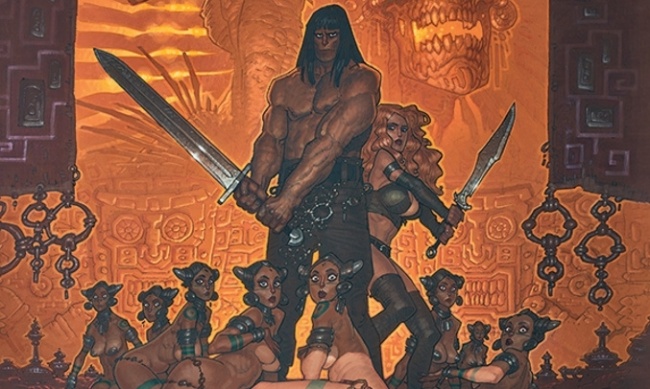 Conan Properties International that will allow it to publish U.S. editions of the Glénat bande dessinée series The Cimmerian, ICv2 has learned. The Glenat series adapts Robert E. Howard Conan stories originally published in Weird Tales into comic stories that Ablaze describes as “the true Conan… unrestrained, violent, and sexual… just as Robert E. Howard intended.”
Conan Properties International that will allow it to publish U.S. editions of the Glénat bande dessinée series The Cimmerian, ICv2 has learned. The Glenat series adapts Robert E. Howard Conan stories originally published in Weird Tales into comic stories that Ablaze describes as “the true Conan… unrestrained, violent, and sexual… just as Robert E. Howard intended.”
Fantasy (DMR Books): To cut straight to the one-line review: Jamie 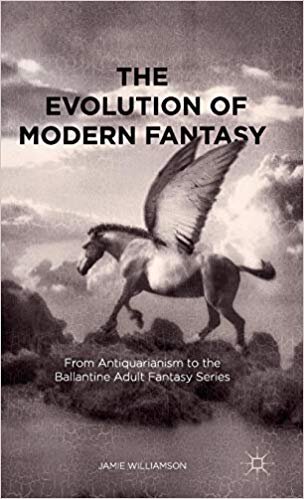 Williamson’s The Evolution of Modern Fantasy (Palgrave McMillan, 2015) is a must-read if you’re at all interested in how the popular genre now known as “fantasy” came about. Even if it’s a little difficult to obtain and get into. Williamson is both an academic and “one of us.” A senior lecturer in English at the University of Vermont, he’s taught a number of classes that I’d love to audit (Tolkien’s Middle Earth, Science Fiction & Fantasy Literature, King Arthur).
Williamson’s The Evolution of Modern Fantasy (Palgrave McMillan, 2015) is a must-read if you’re at all interested in how the popular genre now known as “fantasy” came about. Even if it’s a little difficult to obtain and get into. Williamson is both an academic and “one of us.” A senior lecturer in English at the University of Vermont, he’s taught a number of classes that I’d love to audit (Tolkien’s Middle Earth, Science Fiction & Fantasy Literature, King Arthur).
Historical Fiction (Jess Nevins): Hereward the Wake was written by the Rev. Charles Kingsley and first appeared in as a magazine serial in 1865 before publication as a novel in 1869. It is a fictionalization of the life of the historical Hereward the Wake (circa 1035-circa 1072), a rebel against the eleventh century Norman invasion and occupation of England. Although he became a national hero to the English and the subject of many legends and songs, little is known for certain about Hereward, and it is theorized that he was actually half-Danish rather than of Saxon descent.
Art (Mens Pulp Magazines): During the summer and fall of 2019, we worked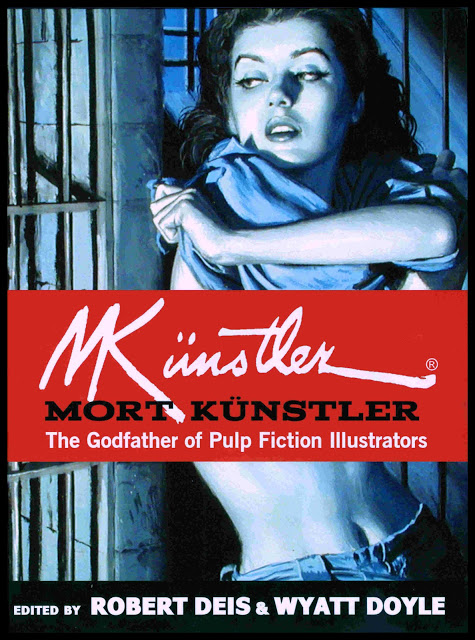 with the great illustration artist Mort Künstler, his daughter Jane Künstler, President of Kunstler Enterprises, and Mort’s archivist Linda Swanson on an art book featuring classic men’s adventure magazine cover and interior paintings Mort did during the first major phase of his long career. That book, titled MORT KÜNSTLER: THE GODFATHER OF PULP FICTION ILLUSTRATORS, is now available on Amazon in the US and worldwide. It’s also available on the Barnes & Noble website and via the Book Depository site, which offers free shipping to anywhere in the world.
with the great illustration artist Mort Künstler, his daughter Jane Künstler, President of Kunstler Enterprises, and Mort’s archivist Linda Swanson on an art book featuring classic men’s adventure magazine cover and interior paintings Mort did during the first major phase of his long career. That book, titled MORT KÜNSTLER: THE GODFATHER OF PULP FICTION ILLUSTRATORS, is now available on Amazon in the US and worldwide. It’s also available on the Barnes & Noble website and via the Book Depository site, which offers free shipping to anywhere in the world.
Gaming (Tim Brannon): Palace of the Vampire Queen. In the beginning, 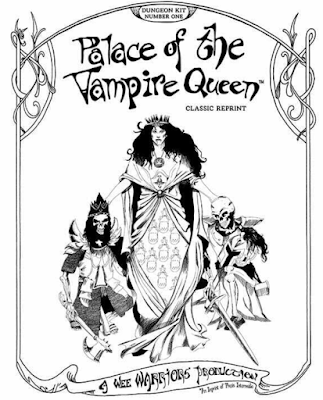 there was a belief that all DMs would naturally create all their own adventures and there was no market for pre-written ones. The only printed adventure out at this time was “Temple of the Frog” in Blackmoor. Seeing a need, the Palace of the Vampire Queen was written by Pete and Judy Kerestan. Yes, the very first adventure was co-written by a woman. The first edition was self-published, followed by a second and third edition by Wee Warriors (1976 and 1977) and distributed exclusively by TSR.
there was a belief that all DMs would naturally create all their own adventures and there was no market for pre-written ones. The only printed adventure out at this time was “Temple of the Frog” in Blackmoor. Seeing a need, the Palace of the Vampire Queen was written by Pete and Judy Kerestan. Yes, the very first adventure was co-written by a woman. The first edition was self-published, followed by a second and third edition by Wee Warriors (1976 and 1977) and distributed exclusively by TSR.
Fiction (DMR Books): Last summer, I was fortunate enough to acquire the  copyrights to Merritt’s material from the previous owners. Along with the rights, I received a few boxes of papers, which I’ve enjoyed going through during the past few months, and which I anticipate will provide me with many more enjoyable evenings perusing them. Among these were papers relating to Merritt and the Avon reprints. Some of this takes the form of correspondence between Merritt’s widow, Eleanor, and the literary agent she’d engaged for Merritt’s work, Brandt & Brandt. Others are contracts with Avon, as well as Avon royalty statements.
copyrights to Merritt’s material from the previous owners. Along with the rights, I received a few boxes of papers, which I’ve enjoyed going through during the past few months, and which I anticipate will provide me with many more enjoyable evenings perusing them. Among these were papers relating to Merritt and the Avon reprints. Some of this takes the form of correspondence between Merritt’s widow, Eleanor, and the literary agent she’d engaged for Merritt’s work, Brandt & Brandt. Others are contracts with Avon, as well as Avon royalty statements.
Pournelle (Tip the Wink): Here, all of Pournelle’s best short work has been  collected in a single volume. There are over a dozen short stories, each with a new introduction by editor and longtime Pournelle assistant John F. Carr, as well as essays and remembrances by Pournelle collaborators and admirers.” My take: I enjoyed this a lot. It had been a while since I read any Pournelle (and then almost always with Niven). I’m now tempted to reread The Mote In God’s Eye.
collected in a single volume. There are over a dozen short stories, each with a new introduction by editor and longtime Pournelle assistant John F. Carr, as well as essays and remembrances by Pournelle collaborators and admirers.” My take: I enjoyed this a lot. It had been a while since I read any Pournelle (and then almost always with Niven). I’m now tempted to reread The Mote In God’s Eye.
Gaming (Reviews From R’lyeh): Ruins of the North is an anthology of 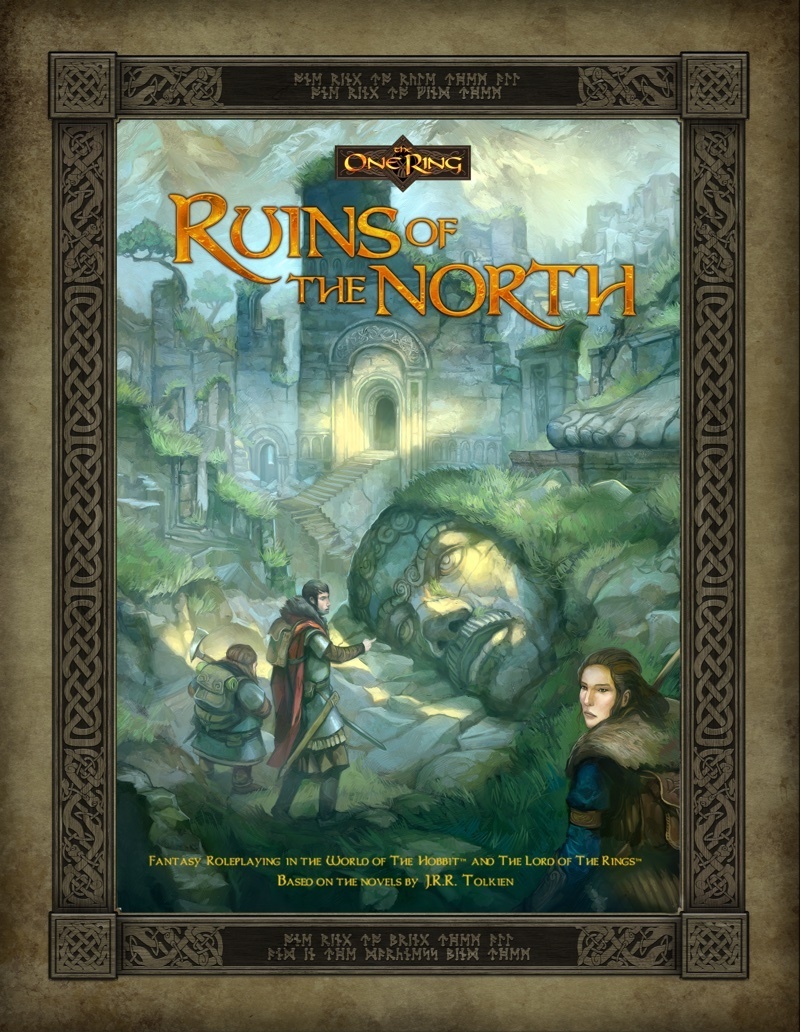 scenarios for The One Ring: Adventures over the Edge of the Wild Roleplaying Game, the recently cancelled roleplaying game published by Cubicle Seven Entertainment which remains the most highly regarded, certainly most nuanced of the four roleplaying games to explore Tolkien’s Middle Earth. It is a companion to Rivendell, the supplement which shifted the roleplaying game’s focus from its starting point to the east of the Misty Mountains, upon Mirkwood and its surrounds with Tales from Wilderland and The Heart of the Wild to the west of the Misty Mountains.
scenarios for The One Ring: Adventures over the Edge of the Wild Roleplaying Game, the recently cancelled roleplaying game published by Cubicle Seven Entertainment which remains the most highly regarded, certainly most nuanced of the four roleplaying games to explore Tolkien’s Middle Earth. It is a companion to Rivendell, the supplement which shifted the roleplaying game’s focus from its starting point to the east of the Misty Mountains, upon Mirkwood and its surrounds with Tales from Wilderland and The Heart of the Wild to the west of the Misty Mountains.
Art (Dark Worlds Quarterly): Being an artist for Weird Tales was not a fast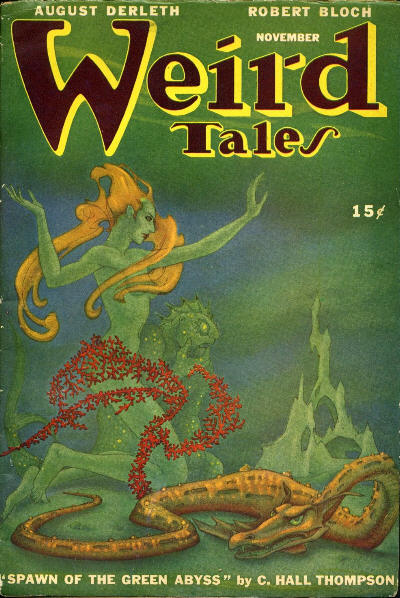 track to fame and fortune. It is only in retrospect that names like Hugh Rankin, A. R. Tilburne, Hannes Bok, Lee Brown Coye and Vincent Napoli take on a luster of grandeur. At the time, the gig of producing illos for Weird Tales was low-paying and largely obscure. Some, like Lee Brown Coye, were able to establish their reputations in the art world after a long apprenticeship in the Pulps. Most are the select favorites of fans. Boris Dolgov was one of these truly brilliant illustrators who time has not been as kind to as should be.
track to fame and fortune. It is only in retrospect that names like Hugh Rankin, A. R. Tilburne, Hannes Bok, Lee Brown Coye and Vincent Napoli take on a luster of grandeur. At the time, the gig of producing illos for Weird Tales was low-paying and largely obscure. Some, like Lee Brown Coye, were able to establish their reputations in the art world after a long apprenticeship in the Pulps. Most are the select favorites of fans. Boris Dolgov was one of these truly brilliant illustrators who time has not been as kind to as should be.
Tolkien (Karavansara): But what really struck me in the whole thing was something that emerged from the debate: some fans said the novel should have been translated by a Tolkien fan, and by someone with a familiarity with fantasy. But other have pointed out that The Lord of the Rings is not fantasy. And my first reaction was, what the heck, with all those elves and orcs, wizards and a fricking magical ring and all the rest, you could have fooled me.
Tolkien (Sacnoth’s Scriptorium): So, I’ve been thinking back over Christopher Tolkien’s extraordinary achievements and wondering which was the most exceptional. A strong case can be made for the 1977 SILMARILLION. In retrospect, now that all the component pieces of that work have seen the light in the HISTORY OF MIDDLE-EARTH series we can see just how difficult his task was, and how comprehensively he mastered it. Special mention shd be made of one of the few passages of that work which we know Christopher himself wrote, rather than extracted from some manuscript of his father: the death of Thingol down in the dark beneath Menegroth, looking at the light of the Silmaril.
Art (Illustrator Spotlight): Many of you have seen some of the pulp covers 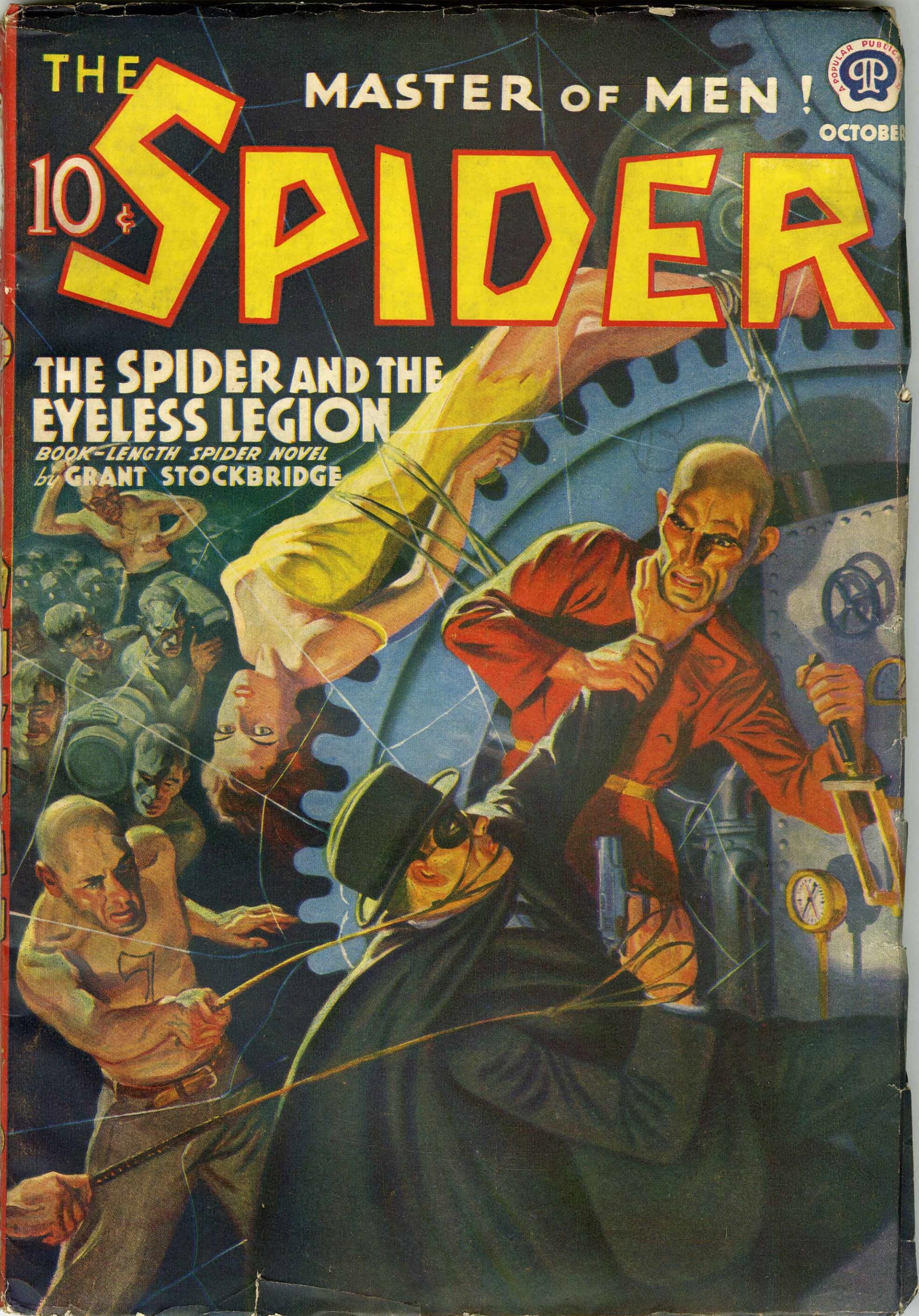 he created; most likely those for The Spider, Terror Tales, Dime Mystery or Dime Detective. I was recently reading a blog post about David Saunder’s book on DeSoto (I can’t find the link to the blog anymore), and one of the comments was about how the commenter didn’t believe that DeSoto deserved a book, having painted only garish, violent covers. My reaction was immediate; I felt like telling the commenter to go forth and multiply, in slightly different words of course.
he created; most likely those for The Spider, Terror Tales, Dime Mystery or Dime Detective. I was recently reading a blog post about David Saunder’s book on DeSoto (I can’t find the link to the blog anymore), and one of the comments was about how the commenter didn’t believe that DeSoto deserved a book, having painted only garish, violent covers. My reaction was immediate; I felt like telling the commenter to go forth and multiply, in slightly different words of course.
Martial Arts (Rawle Nyanzi): Yesterday, I put up a blog post where I showed videos discussing Andrew Klavan’s comments regarding women and swordfighting (namely, that women are utterly useless at it.) As one would expect, this has been discussed all around the internet, but much of it involves virtue signalling. To cut through a lot of that fog, I will show you a video by medieval swordsmanship YouTuber Skallagrim, in which he discusses the comments with two female HEMA practitioners — one old, one young.
Fiction (Black Gate): Changa’s Safari began in 1986 as a concept inspired by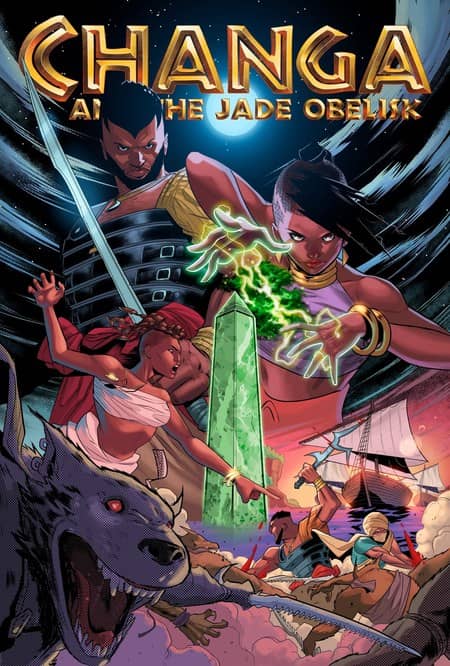 Robert E. Howard’s Conan. I wanted to create a heroic character with all the power and action of the brooding Cimmerian but based on African history, culture and tradition. Although the idea came early, the actual execution didn’t begin until 2005, when I decided to take the plunge into writing and publishing. During its creation I had the great fortune to meet and become friends with Charles R. Saunders, whose similar inspiration by Howard led to the creation of the iconic Imaro. What was planned to be a short story became a five-volume collection of tales that ended a few years ago with Son of Mfumu.
Robert E. Howard’s Conan. I wanted to create a heroic character with all the power and action of the brooding Cimmerian but based on African history, culture and tradition. Although the idea came early, the actual execution didn’t begin until 2005, when I decided to take the plunge into writing and publishing. During its creation I had the great fortune to meet and become friends with Charles R. Saunders, whose similar inspiration by Howard led to the creation of the iconic Imaro. What was planned to be a short story became a five-volume collection of tales that ended a few years ago with Son of Mfumu.
Gaming (Sorcerer’s Skull): The Arimites have the gloomy environment of Robert E. Howard’s Cimmerians and elements of a number of hill or mountain folk. They’ve got a thing for knives like the Afghans of pulp tradition with their Khyber knives, though the Arimites mostly use throwing knives. They’re miners, and prone to feuding and substance abuse, traits often associated with Appalachian folk. I say play up that stuff and add a bit from the Khors of Vance’s Tshcai–see the quote at the start, and here’s another: “they consider garrulity a crime against nature.”
It kinda sounds like Joanna Russ was the kind of self-hating lesbian who blamed men for how her mother abused her. I’ve noticed elsewhere that when women complain about ‘society pressure’ on them, there’s a tendency to blame men for what turns out to be female hierarchy and female group-instinct at work. Is blaming men the pressure valve for not having to acknowledge that in the ‘war of the sexes’, the majority of damage to women, particularly psychological damage, is inflicted by their own side?
-
Exactly. I mean, don’t so many feminists claim that women just naturally have higher “emotional quotients”/’EQs”? With such a mastery of emotions, wouldn’t they be the ones who could inflict the most emotional harm? How could “stupid men” pull that off?
I almost feel sorry for Russ, but then I remember what a hateful nutcase she was and the sorry kinda goes away.
I like the le Guin quote in there:
“It’s time,” she said, we stop whining about what awful things I have done to women and what awful things men have done to me, and then compensating by daydreaming about retaliation and the Perfectly Guiltless Society; it’s time we try to start intelligently and passionately and compassionately considering, proposing, inventing, and acting out alternatives. If even people in science fiction can’t do that, can’t look forward instead of back, it’s bad news for the women’s movement, and everybody else.”
I’m no particular fan of le Guin. I certainly didn’t cry into my keyboard when she died, as did one person I know did. That said, she could be insightful occasionally.
25 pro level science fiction magazines? Where? Not in book stores. Apparently they are including e magazines which you can only find on line if you know they exist.
An excellent post on Christopher Tolkien. I raise a mead-horn to his shade.
Always nice to see a gaming blog taking a look at the Talislanta setting. Easily one of the best fantasy RPG settings ever.
Nevins makes Kingsley’s HEREWARD THE WAKE sound interesting. We know that Robert E. Howard was something of a fan of Kingsley’s WESTWARD HO!, with two characters from that novel being mentioned in the alternate version of “Solomon Kane’s Homecoming”. I’ve always been interested in the historical Hereward, so I might track Kingsley’s novel down online.